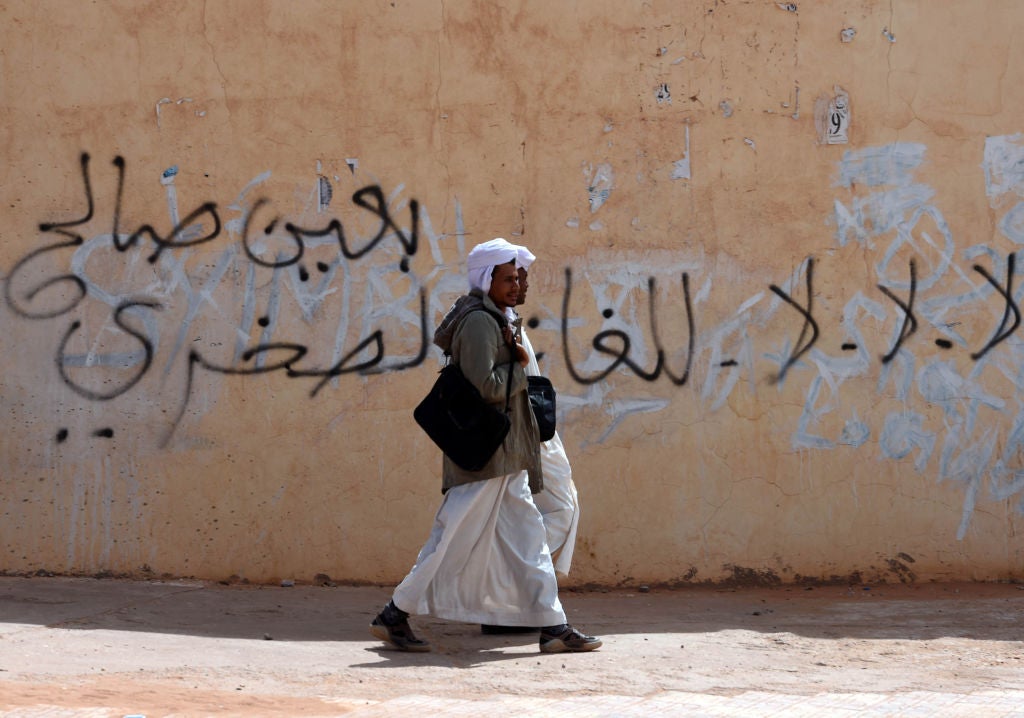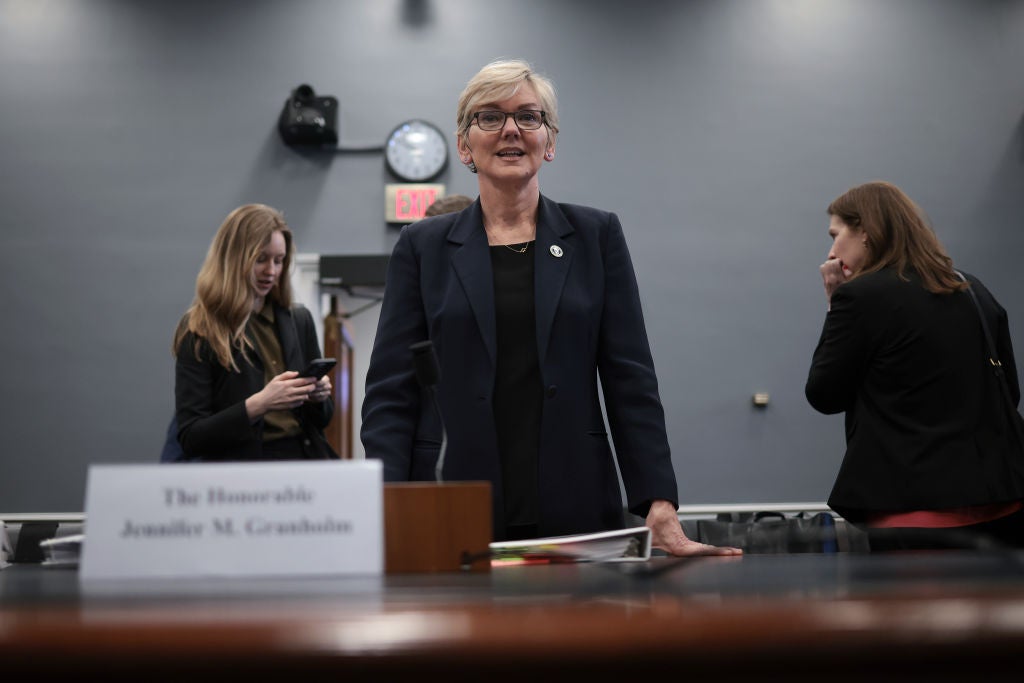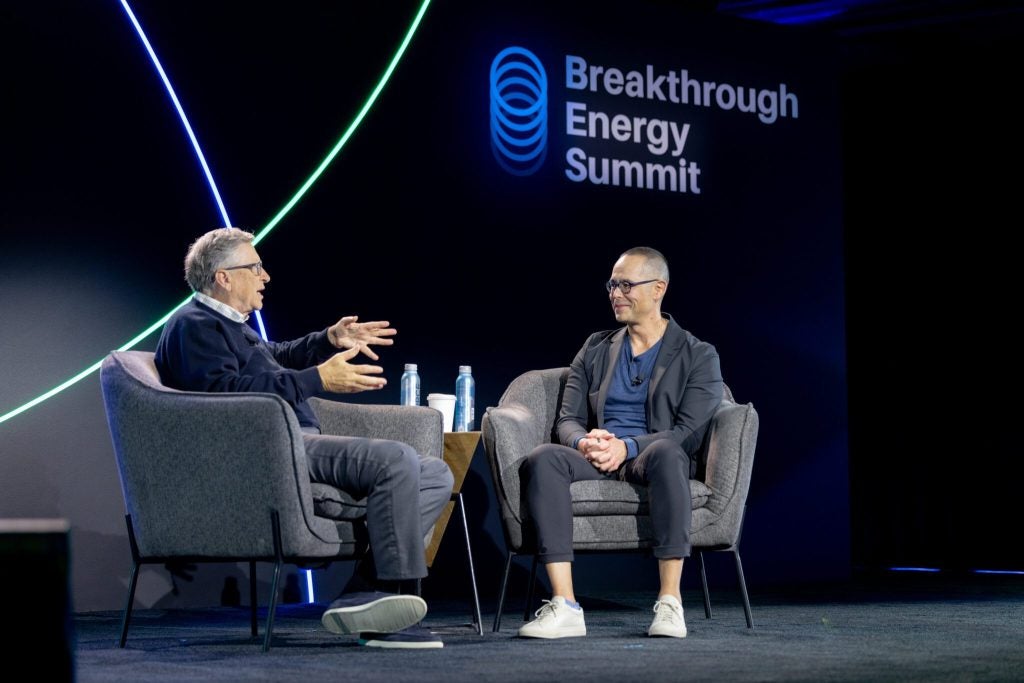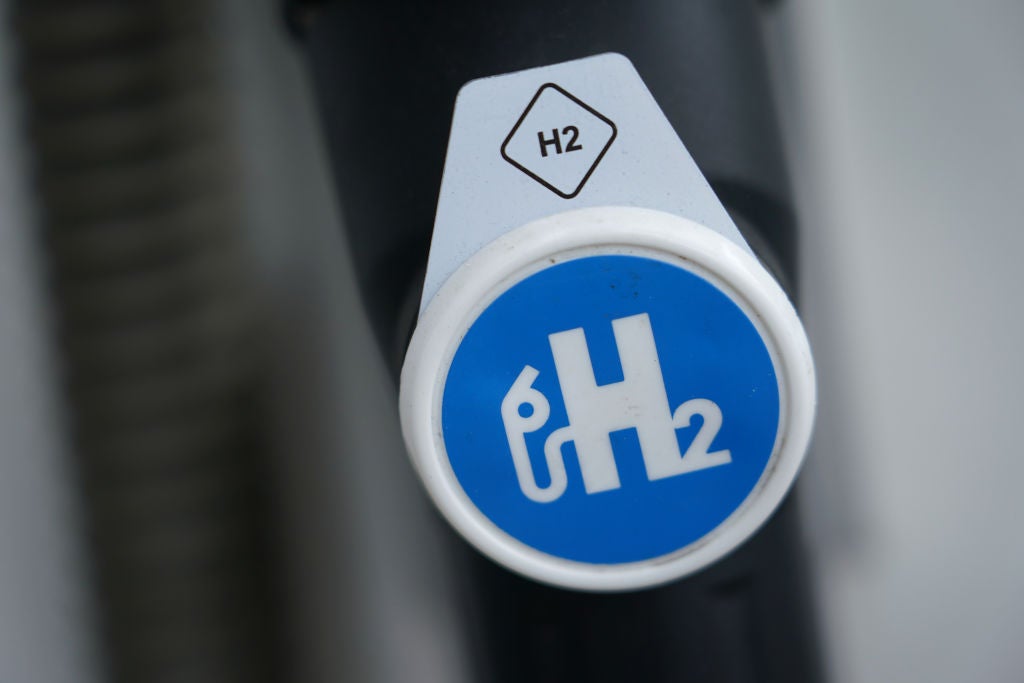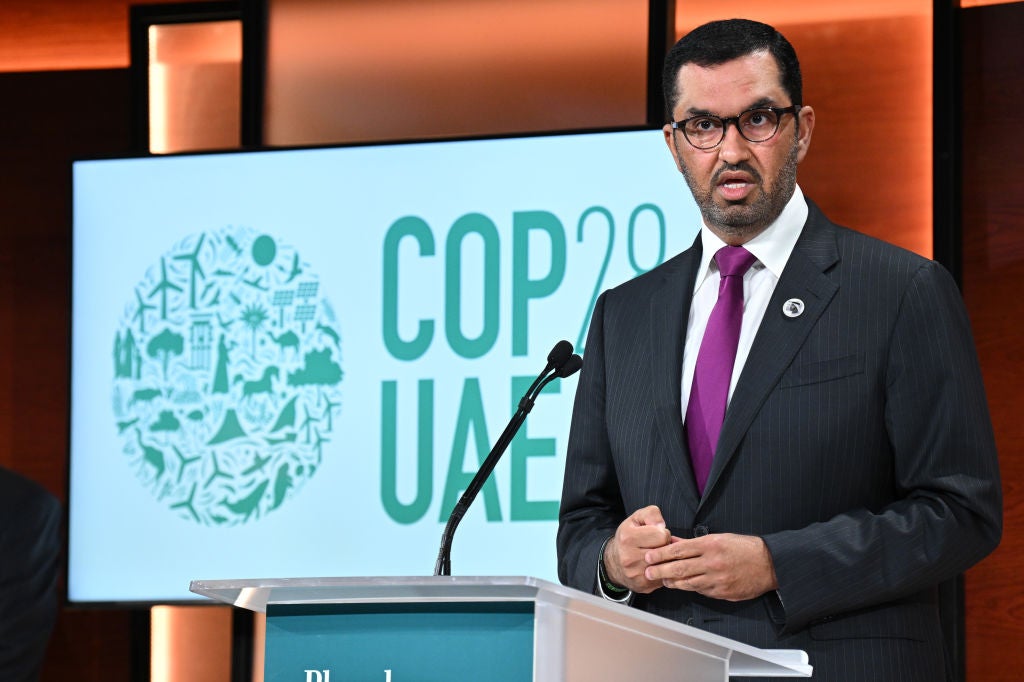
COP28 host the United Arab Emirates (UAE) has plans in place to extract 38 billion barrels of oil and gas between now and 2085 – with significant further reserves that could also be extracted in that time.
If all oil producing nations followed such a strategy, the world’s carbon budget for 1.5°C would be exceeded many times over. As one of the wealthiest petrostates in the world – with a gross domestic product (GDP) per capita of $44,000 (Dh161,590) – the “common but differentiated responsibility” clause of the 2015 Paris Agreement dictates that the UAE should end oil and gas production sooner than other, less wealthy nations. But as yet the UAE has no such plans.
According to exclusive data from Energy Monitor’s parent company, GlobalData, there are some 28.3 billion barrels of oil remaining in active fields in the UAE, with a further 1.5 billion barrels in fields that are currently planned.
Active fields in the UAE also have some 38.2 trillion cubic feet (trcf) of gas remaining, while planned fields contain 10.5trcf of gas. The combined volume of hydrocarbons in active and planned oil and gas fields in the UAE adds up to 38.4 billion barrels of oil equivalent.
The UAE is continuing to develop new oil and gas fields despite the International Energy Agency (IEA) repeatedly warning that for the world to meet its target of net zero by mid-century, oil and gas use must go into managed decline, with no new oil and gas fields approved for development beyond those already in existence.
The UAE’s oil plans are in the spotlight right now given the country’s high-profile role hosting the next annual UN climate conference, COP28, which is taking place in Dubai at the end of November.
How well do you really know your competitors?
Access the most comprehensive Company Profiles on the market, powered by GlobalData. Save hours of research. Gain competitive edge.

Thank you!
Your download email will arrive shortly
Not ready to buy yet? Download a free sample
We are confident about the unique quality of our Company Profiles. However, we want you to make the most beneficial decision for your business, so we offer a free sample that you can download by submitting the below form
By GlobalDataGiven that the burning of fossil fuels is by far the largest contributor to global warming, the UAE’s position as the world’s seventh-largest oil producer, and 14th-largest gas producer, is a major point of concern among climate experts.
“There is overwhelming scientific evidence that achieving the Paris goals leaves no room for new fossil fuel projects, and that existing fossil fuel production and use needs to be wound down rapidly,” says Greg Muttitt, a senior associate at the International Institute for Sustainable Development.
“The urgent priority for fossil fuel-producing countries must be to begin a managed phase-out, while diversifying their economies and ensuring a just transition for workers and communities,” Muttitt adds.
As things stand, the UAE looks unlikely to prioritise ending fossil fuel production. The country’s appointed president of the COP28 talks, Sultan Al Jaber, is also CEO of the UAE's national oil company. “Whether we like it or not, the world will continue to need [fossil fuels],” he said in a recent interview. “My focus is to phase out emissions from everything. Regardless of where it comes from.”
The 30 billion barrels of oil and 48trcf of gas in active and planned fields is by no means the limit of the fossil fuels that the UAE could extract. In all, the country has an estimated 111 billion barrels of oil and 290trcf of gas in known reserves.
Most of these reserves are not about to be extracted. However, the country has an expansionist oil and gas policy, and a government that looks intent on maxing out the value of its hydrocarbon reserves, rather than worrying about their impact on the Earth’s climate.
The UAE has committed to net zero by 2050, but the country’s government makes no reference to the role of fossil fuels in its outline of that target. Instead, the UAE has prioritised building out renewables rather than address oil and gas: The country has invested more than $40bn in renewables to date, and anticipates growing its clean energy capacity from 2.4GW in 2020 to 14GW by 2030.
At the same time, in November 2022, national oil company ADNOC announced a $150bn investment over five years to deliver an “accelerated growth strategy” for oil and gas production. As part of that strategy, ADNOC awarded almost $6bn in offshore drilling contracts in 2022.
Think tank Climate Action Tracker, which assesses countries’ net-zero pledges, calls the country’s pledge “poor”. Its latest assessment, from July 2023, states: “The investments going towards new fossil fuel infrastructure are not consistent with limiting global warming to 1.5°C, [and] instead are likely to lock the UAE into a high-emissions trajectory and undermine its transition towards renewable energy.”
Some 34 oil and gas fields in the UAE are listed as discovered by GlobalData, meaning that hydrocarbons are known to be present, but plans to begin extraction have yet to be formulated.
“This data is consistent with our own analysis showing that the UAE has some of the biggest plans for new oil and gas extraction in the world,” said Kelly Trout, research director at the NGO Oil Change International, in response to Energy Monitor’s findings.
“The UAE faces a crisis of credibility going into COP28. Every drop of additional oil and gas extracted will worsen the climate crisis and push the world closer to breaching the globally agreed 1.5°C temperature limit.”
Blowing the carbon budget
The 30 billion barrels of oil and 48trcf of gas in active and planned fields will respectively produce an estimated 12.9 and 2.7 gigatonnes (Gt) of carbon dioxide if burnt, according to carbon equivalency figures from the US Environmental Protection Agency.
This represents just under half of the total global emissions produced by humanity in 2022. It also represents around 4% of the entire remaining carbon budget for 1.5°C warming at the end of 2022 (380Gt) – a percentage that will only increase when the latest projection for the remaining carbon budget is released by the Global Carbon Project at the end of this year. The UAE contains around 0.1% of the world’s total population.
As a wealthy country with a high GDP per capita and Human Development Index ranking, the UAE has a greater responsibility to decarbonise than poorer oil-producing nations, under the terms of the “common but differentiated responsibility” clause of the 2015 Paris Agreement.
Academics at Manchester University’s Tyndall Centre for Climate Change Research produced a report last year dividing the 88 countries responsible for almost all global oil and gas supply into five groups according to their “capacity” – based on wealth – to rapidly transition away from fossil fuels. The research found that the 19 highest-capacity countries – including the US, the UK, UAE and Norway – should end production by 2034, with a 74% cut by 2030, for the world to meet its target of net zero in 2050.
More recently, former UK Prime Minister Gordon Brown made the case that wealthy oil nations should pay a global windfall tax from recent high oil income to help poorer nations address climate change.
Speaking at the Climate Ambition Summit in New York in September, UN Secretary General Antonio Guterres described the "almost unimaginable profits" of petrostates following Russia’s invasion of Ukraine. He quoted figures from the IEA, which show that global oil and gas revenues soared from $1.5trn before the Covid pandemic to an unprecedented $4trn in 2022.
The UAE saw its national income increase by 31.8% in 2022, according to the Finance Ministry, but has made no announcement it will channel this into a radical shift away from fossil fuels or towards poorer nations to help them cope with climate change.
UAE: investing in oil and gas for beyond 2050
The UAE was the first country in the Middle East and North Africa to make a pledge to reach net-zero emissions by mid-century – a commitment that has been reiterated in 2023 in the build-up to COP28.
Yet the anticipated end-dates for most of the UAE’s currently producing and planned oil and gas fields is after 2050. A large number of fields are expected to keep producing oil and gas into the 2070s and 2080s, shows data from GlobalData.
It is not only upstream where the UAE is continuing to invest in oil and gas. Data shows that the country is also developing new oil refineries, gas processing facilities, oil storage facilities and pipelines.
There is a particular push to develop new gas pipelines in the country, with ADNOC Gas awarding $1.34bn to expand its pipeline network this year. The deal is expected to expand the country’s domestic gas network from 3,200km to around 3,500km.
ADNOC Gas is also seeking to capitalise on booming global demand for liquefied natural gas (LNG), signing a three-year export agreement with French energy giant TotalEnergies to supply a global LNG market that grew to be worth $450bn in 2022, after Russia’s invasion of Ukraine sent prices soaring.
Carbon capture and carbon offsets
In order to justify an energy strategy that still includes the exploitation of oil and gas, the UAE is making big investments into carbon capture and storage (CCS) and carbon offset markets.
In June 2023, a group of UAE companies launched the UAE Carbon Alliance to develop a domestic carbon market within the country. The UAE is also investing in carbon markets globally, committing $450m to purchase carbon offsets in Africa at the inaugural Africa Climate Summit, which took place in Nairobi in September.
Wealthy countries’ pursuit of carbon credits in developing nations is a climate solution steeped in controversy. “It is regrettable that the Africa Climate Summit is becoming a bazaar for carbon credit speculators and propagandists that serve to greenwash rather than reduce harmful emissions,” said Greenpeace Africa climate and energy campaigner Thandile Chinyavanhu at the time.
“They are risky diversions from real climate and biodiversity action that requires ending fossil fuel expansion,” she added.
The UAE is also pushing hard to develop new CCS capacity, with ADNOC announcing plans in October to capture ten million tonnes of carbon dioxide emissions annually by 2030. However, this represents only a fraction of the company’s current operational emissions (which total 24 million tonnes), let alone the gigatonnes of emissions that will be emitted if the oil and gas in operating and planned fields in the country is burnt.
Most climate experts argue that CCS will be needed for the world to get to net zero, but it remains a nascent technology, whose future use should be focused on hard-to-abate sectors, rather than trying to justify business-as-usual, they argue.
The IEA’s Net Zero 2050 pathway anticipates global CCS increasing to 7.6Gt by 2050, with the technology applied to some gas and coal-fired power stations, certain industries such as cement and ‘blue' hydrogen production from natural gas.
“The UAE’s faith in carbon capture and storage – assuming the technology can be scaled up and operated adequately – is no justification for investing in the development of huge new oil and gas projects. It should instead be reserved to decarbonise the hardest-to-abate sectors”, says Richard Collett-White, an analyst at the think tank Carbon Tracker.
Collett-White adds that there is a big need for fossil fuel-dependent economies such as the UAE to diversify, in order to “avoid being left high and dry” as the energy transition eats into fossil fuel demand and ultimately dampens prices in the long term.
“COP28 presents the perfect opportunity for the UAE to show it is committed to driving the energy transition away from fossil fuels,” he says. “The country could provide a blueprint for other states reliant on oil and gas revenues.”
A Carbon Tracker report published this month – Navigating Peak Demand – argues that with bodies including the IEA now anticipating peak oil demand before the end of the decade, it is time for oil and gas companies to make “radical choices”.



